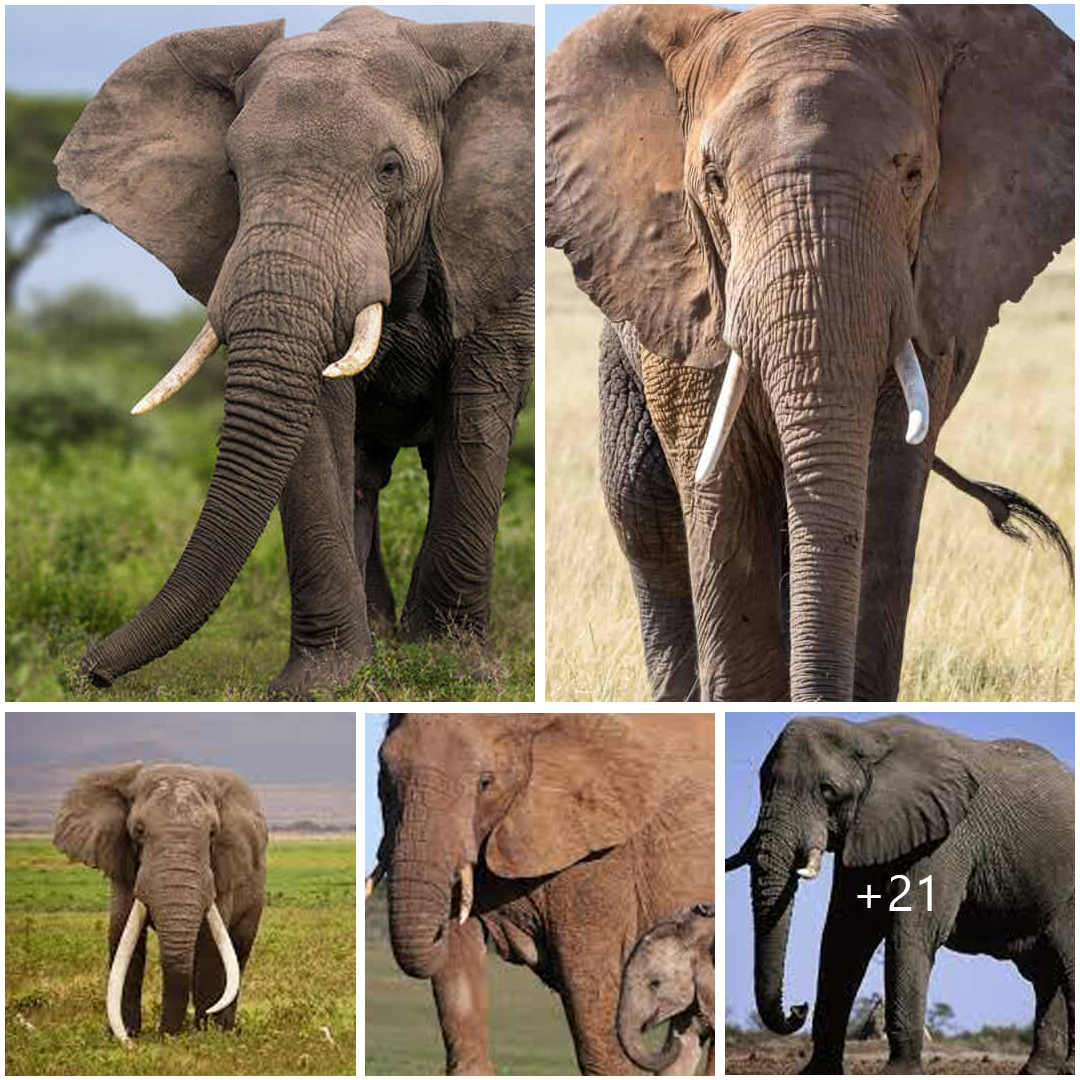
African Elephant: Majestic Giants of the Savanna
The African elephant, scientifically known as Loxodonta africana, is a truly iconic species that roams the vast savannas and forests of Africa. Renowned for their impressive size, intelligence, and intricate social structures, African elephants captivate the imagination of people around the world.
Appearance and Physical Characteristics: African elephants are the largest land animals on Earth, distinguished by their long trunks, massive ears, and elongated tusks. Bulls (males) typically reach heights of up to 3 meters (10 feet) at the shoulder and can weigh as much as 6,000 kilograms (13,000 pounds), while cows (females) are slightly smaller. Their grayish skin is sparsely covered with coarse hairs, and their large, fan-shaped ears help dissipate excess heat, crucial for regulating body temperature in Africa’s often sweltering climates.
Habitat and Range: These magnificent creatures inhabit a range of diverse habitats across sub-Saharan Africa, including grasslands, woodlands, forests, and even deserts. While they are most commonly associated with the vast savannas of East and Southern Africa, African elephants can also be found in countries such as Kenya, Tanzania, Botswana, Zimbabwe, and South Africa.
Behavior and Social Structure: African elephants are highly social animals that live in complex matriarchal herds led by an experienced female known as the matriarch. These herds typically consist of related females and their offspring, with mature bulls often living solitary lives or forming small bachelor groups. Communication within elephant herds is sophisticated and multifaceted, involving a combination of vocalizations, body language, and tactile cues.
Conservation Status and Threats: Despite their cultural significance and ecological importance, African elephants face numerous threats to their survival, primarily due to habitat loss, poaching for ivory, and human-wildlife conflict. As a result, they are listed as vulnerable on the International Union for Conservation of Nature (IUCN) Red List of Threatened Species. Conservation efforts, including habitat protection, anti-poaching measures, and community-based initiatives, are essential for safeguarding the future of these majestic animals.
Conclusion: The African elephant symbolizes the awe-inspiring beauty and resilience of Africa’s wildlife. As ambassadors for the continent’s rich biodiversity, they remind us of the urgent need to protect and conserve our natural heritage for generations to come. By working together to address the challenges facing African elephants, we can ensure that these magnificent giants continue to roam the African landscape for millennia to come.





